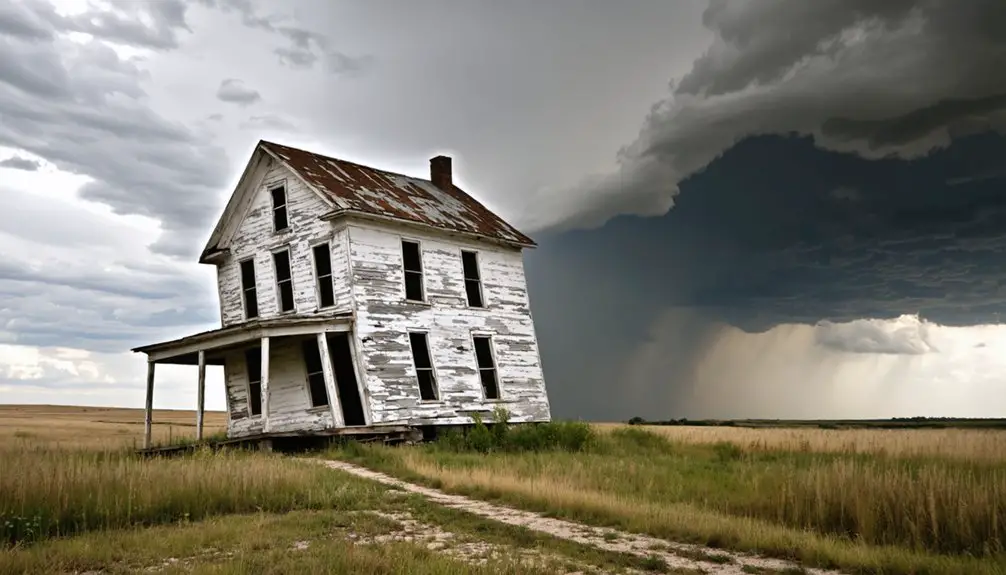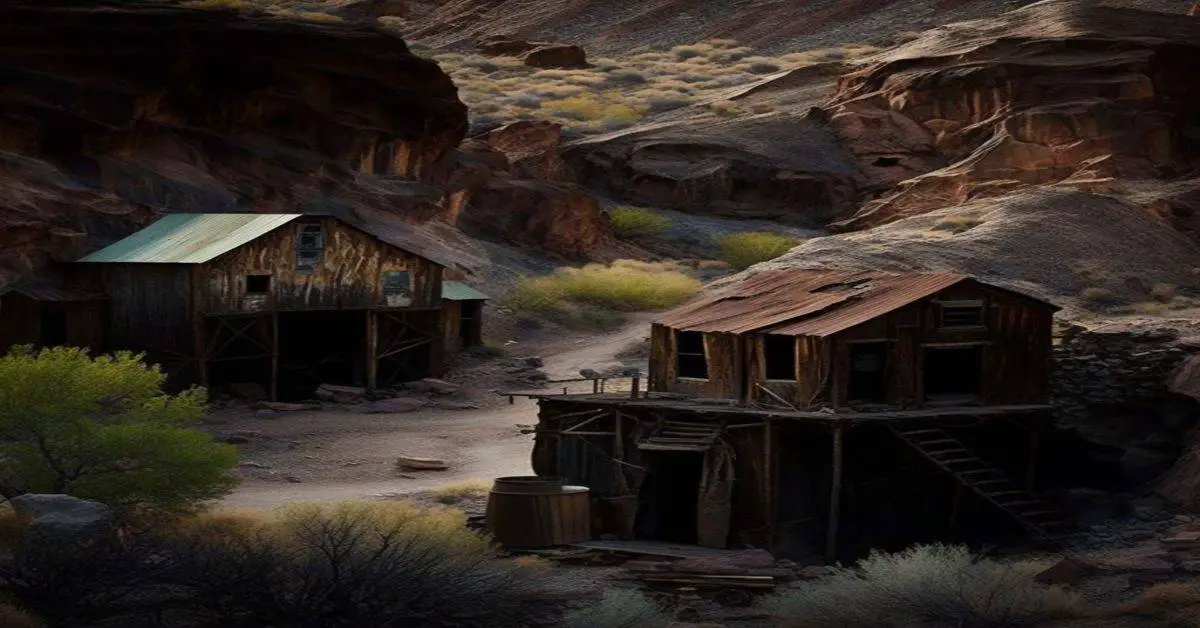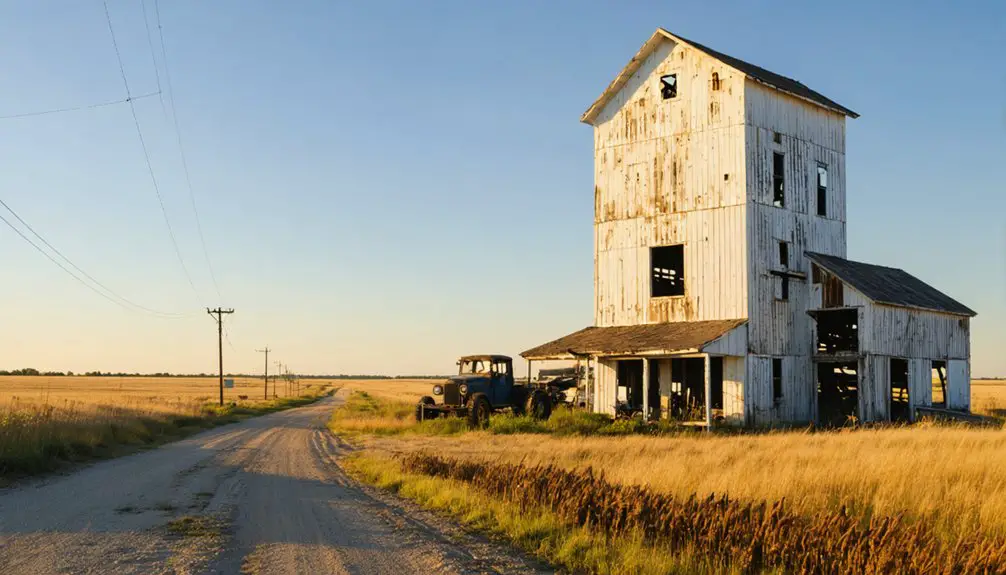You’ll find Van Hook’s ghost town story uniquely compelling – it wasn’t abandoned, but deliberately submerged. Founded as a railroad boomtown in 1914, this North Dakota prairie community thrived with 400 residents and 54 businesses until 1953, when the Garrison Dam project created Lake Sakakawea. While most residents relocated to New Town, Van Hook’s legacy lives on through its namesake arm of the lake, where a resort community now offers glimpses into its remarkable past.
Key Takeaways
- Van Hook was flooded in 1953 during the creation of Lake Sakakawea, forcing residents to abandon the original townsite.
- The town flourished from 1914-1950s with nearly 400 residents and 54 businesses before being displaced by Garrison Dam.
- Most residents relocated to New Town along with displaced residents from nearby Sanish.
- The original townsite remained mostly above water but the community dispersed, leading to its ghost town status.
- Van Hook transformed into a resort destination in the 1970s, though the original town community never reformed.
Birth of a Railroad Boomtown
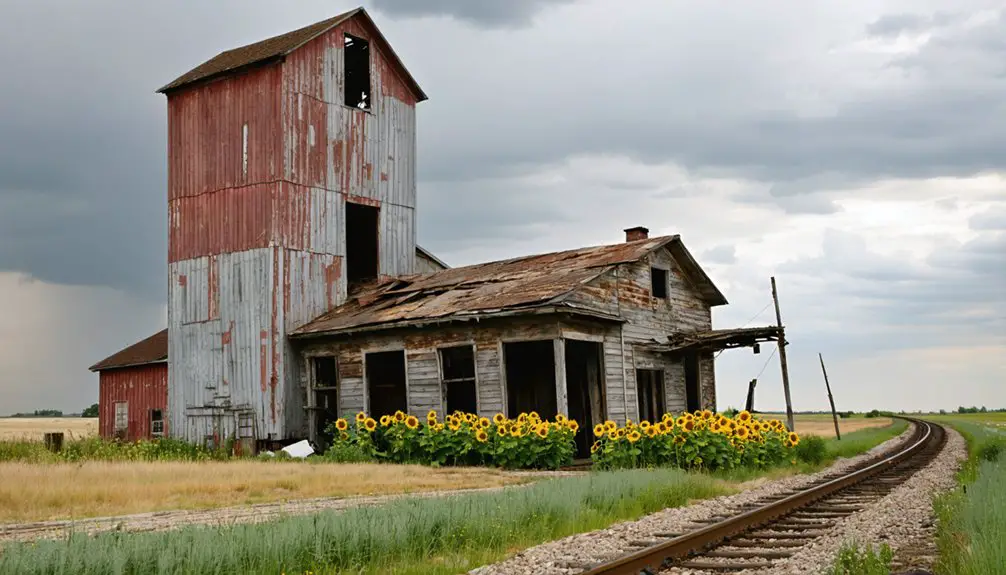
As North Dakota’s railroad expansion reached westward in 1914, Van Hook emerged from prairie grasslands when contractors completed the essential rail grade connecting the town to the Missouri River.
You’d have found the first steel train rolling into town on July 24, 1915, marking the beginning of regular service that would transform this frontier outpost.
The railroad’s arrival sparked explosive commercial growth, with 54 businesses quickly springing up, including 11 eating establishments.
While early residents lived as squatters that first winter, by 1916 government surveyors had laid out an official townsite that stretched from the tracks to the river.
You can imagine the excitement at the first public lot sale on November 11, 1916, as enthusiastic bidders competed to stake their claim in this promising new railroad hub.
Life Before the Great Flood
Daily life in Van Hook between 1914 and the 1950s painted a picture of hardy frontier resilience, with nearly 400 residents building a tight-knit community around farming, hunting, and social gatherings.
You’d find strong community cohesion through church activities, card games, dances, and basket socials. Residents faced economic challenges head-on, working larger plots than standard 160-acre homesteads to survive the semi-arid climate.
In Van Hook’s harsh frontier days, neighbors banded together through faith and fellowship while working vast tracts of challenging prairie land.
They’d supplement their farming income by gathering buffalo bones and mining local lignite deposits. Self-sufficiency was key – you’d see folks preserving meat and vegetables, herding cattle, and hunting wild game.
The town’s multicultural fabric included Scandinavian and Germanic immigrants, who contributed to the rich social traditions. Despite limited infrastructure, Van Hook’s residents maintained essential services through cooperation and determination.
The Garrison Dam’s Transformation
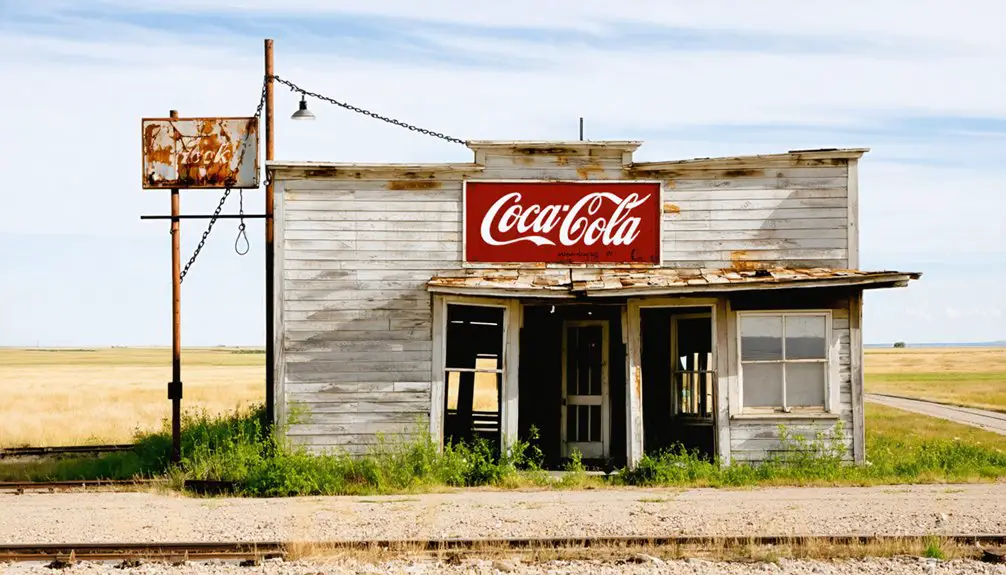
The massive Garrison Dam project reshaped North Dakota’s landscape between 1947 and 1953, stretching over two miles across the Missouri River.
This monumental dam construction effort used 70 million yards of earth and 1.5 million yards of concrete, creating one of the world’s largest earthen dams.
The water management system’s impact transformed the region in four major ways:
- Created Lake Sakakawea, stretching 200 miles toward Williston
- Established hydroelectric power generation of 240,000 kW
- Enabled irrigation potential for thousands of acres of farmland
- Provided municipal water supplies to 32 communities
You’ll find the dam’s effects reached far beyond its physical presence, forever changing local communities, particularly the Three Affiliated Tribes, who lost significant reservation lands to the rising waters of Lake Sakakawea.
Echoes of a Lost Community
While many towns fade slowly into history, Van Hook’s story ended abruptly in 1953 when Lake Sakakawea’s rising waters forced its residents to relocate.
You’ll find that unlike nearby Sanish, most of Van Hook’s original townsite remained above water, though its fate was sealed just the same.
The community’s resilience showed in their collective move to New Town, where they joined displaced Sanish residents.
Today, you can spot traces of Van Hook’s past at Traynor Park, established in 1976 as a symbol of historical remembrance.
While few physical remnants survive, the Van Hook Arm of Lake Sakakawea preserves the town’s name, and local historical societies maintain the stories of this once-vibrant farming community.
It’s a powerful reminder of how federal projects could reshape entire communities overnight.
Van Hook’s Second Chapter: Resort Living
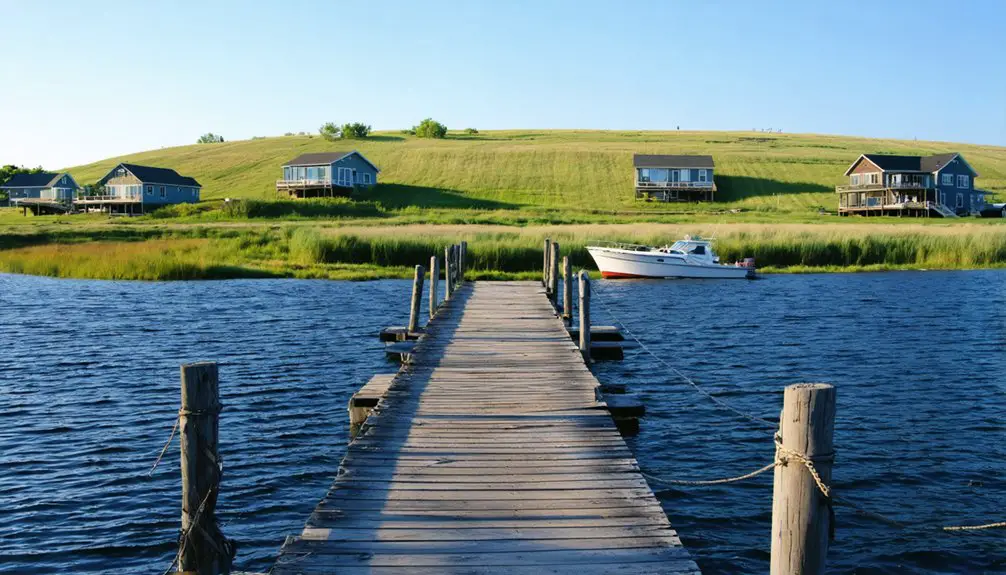
Rising from its abandoned past, Van Hook found new life as a vibrant resort destination in the 1970s when Frank Traynor spearheaded efforts to transform the former townsite into a recreational haven.
The resort development gained momentum after Congress approved the land transfer in 1974, leading to significant community growth along Lake Sakakawea’s shores.
Today, you’ll find a thriving seasonal community that offers:
- Well-maintained boat ramps and guided fishing tours
- Local bait shops and convenience stores run by dedicated residents
- Summer cabins and year-round housing options
- Modern amenities including the Territorial Inn and Travel Center
While oil development near the resort has brought new challenges, Van Hook continues to balance its role as both a peaceful getaway and an evolving community, drawing visitors from across North Dakota and beyond.
Frequently Asked Questions
Are There Any Remaining Original Structures From Van Hook Still Standing Today?
You won’t find any original architecture standing in today’s Van Hook. Despite preservation efforts, the town’s old structures disappeared when it transformed into a modern resort community on Lake Sakakawea.
What Native American Tribes Originally Inhabited the Van Hook Area?
You’ll find the area’s Native heritage centered on the Three Affiliated Tribes – Mandan, Hidatsa, and Arikara – who established communities along the Missouri River, with Dakota and other tribes frequently traversing this rich Tribal history.
How Deep Is Lake Sakakawea Where the Original Van Hook Townsite Stands?
Like a submerged time capsule, you’ll find the historical Van Hook townsite resting beneath approximately 180 feet of Lake Sakakawea’s waters, marking one of the lake’s deepest points along its old river channel.
Do Any Former Van Hook Residents Still Hold Reunions or Gatherings?
You won’t find documented evidence of formal reunion events among former residents today. While the resort town hosts gatherings, there’s no record of original Van Hook community members organizing specific reunions.
What Businesses and Services Are Available in the Modern Van Hook Resort Area?
Within 10 miles you’ll find two lodging options, Ranchmans 23 Bar/Restaurant, modern amenities like WiFi and boat facilities, plus access to outdoor activities including premier fishing, hunting, golf and lakeside recreation at Lake Sakakawea.
References
- https://news.prairiepublic.org/show/dakota-datebook-archive/2022-05-18/build-it-and-they-will-come
- https://en.wikipedia.org/wiki/Van_Hook
- https://www.onlyinyourstate.com/state-pride/north-dakota/underwater-ghost-towns-nd
- https://en.wikipedia.org/wiki/Van_Hook_Township
- https://ghostsofnorthdakota892857007.wordpress.com/2013/11/12/lost-beneath-the-lake-sanish-north-dakota/
- https://www.history.nd.gov/archives/manuscripts/inventory/11140.html
- https://www.newtownchamber.org/about
- https://www.ndstudies.gov/gr4/early-settlement-north-dakota/part-1-early-settlement-north-dakota/section-9-railroads
- https://www.history.nd.gov/hp/PDFinfo/North-Dakota-Railroads-MPDF-Final-corrected.pdf
- https://www.history.nd.gov/ndhistory/settlement.html
